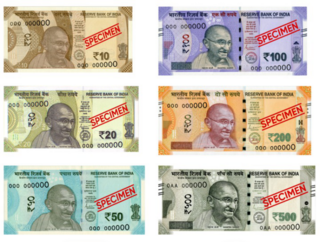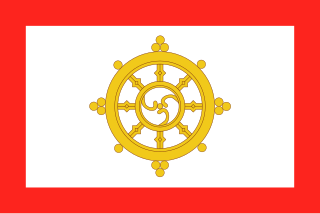
The British Empire was composed of the dominions, colonies, protectorates, mandates, and other territories ruled or administered by the United Kingdom and its predecessor states. It began with the overseas possessions and trading posts established by England between the late 16th and early 18th centuries. At its height it was the largest empire in history and, for over a century, was the foremost global power. By 1913 the British Empire held sway over 412 million people, 23 per cent of the world population at the time, and by 1920 it covered 35,500,000 km2 (13,700,000 sq mi), 24 per cent of the Earth's total land area. As a result, its constitutional, legal, linguistic, and cultural legacy is widespread. At the peak of its power, it was described as "the empire on which the sun never sets", as the sun was always shining on at least one of its territories.

According to consensus in modern genetics, anatomically modern humans first arrived on the Indian subcontinent from Africa between 73,000 and 55,000 years ago. However, the earliest known human remains in South Asia date to 30,000 years ago. Settled life, which involves the transition from foraging to farming and pastoralism, began in South Asia around 7,000 BCE. At the site of Mehrgarh presence can be documented of the domestication of wheat and barley, rapidly followed by that of goats, sheep, and cattle. By 4,500 BCE, settled life had spread more widely, and began to gradually evolve into the Indus Valley Civilization, an early civilization of the Old world, which was contemporaneous with Ancient Egypt and Mesopotamia. This civilisation flourished between 2,500 BCE and 1900 BCE in what today is Pakistan and north-western India, and was noted for its urban planning, baked brick houses, elaborate drainage, and water supply.

India, officially the Republic of India, is a country in South Asia. It is the seventh-largest country by area, the second-most populous country, and the most populous democracy in the world. Bounded by the Indian Ocean on the south, the Arabian Sea on the southwest, and the Bay of Bengal on the southeast, it shares land borders with Pakistan to the west; China, Nepal, and Bhutan to the north; and Bangladesh and Myanmar to the east. In the Indian Ocean, India is in the vicinity of Sri Lanka and the Maldives; its Andaman and Nicobar Islands share a maritime border with Thailand, Myanmar and Indonesia.

Jawaharlal Nehru was an Indian anti-colonial nationalist, secular humanist, social democrat and author who was a central figure in India during the middle of the 20th century. Nehru was a principal leader of the Indian nationalist movement in the 1930s and 1940s. Upon India's independence in 1947, he served as the country's prime minister for 17 years. Nehru promoted parliamentary democracy, secularism, and science and technology during the 1950s, powerfully influencing India's arc as a modern nation. In international affairs, he steered India clear of the two blocs of the Cold War. A well-regarded author, his books written in prison, such as Letters from a Father to His Daughter (1929), An Autobiography (1936) and The Discovery of India (1946), have been read around the world.

Mohandas Karamchand Gandhi was an Indian lawyer, anti-colonial nationalist and political ethicist who employed nonviolent resistance to lead the successful campaign for India's independence from British rule, and to later inspire movements for civil rights and freedom across the world. The honorific Mahātmā, first applied to him in 1914 in South Africa, is now used throughout the world.

The East India Company (EIC) was an English, and later British, joint-stock company founded in 1600. It was formed to trade in the Indian Ocean region, initially with the East Indies, and later with East Asia. The company seized control of large parts of the Indian subcontinent, colonised parts of Southeast Asia and Hong Kong, and kept trading posts and colonies in the Persian Gulf Residencies. At its peak, the company was the largest corporation in the world, competing with the Dutch East India Company. The HEIC even had its own armed forces in the form of the company's three Presidency armies, totalling about 260,000 soldiers, twice the size of the army of Britain. The operations of the company had a profound effect on the global balance of trade, almost single-handedly reversing the trend of eastward drain of Western bullion, seen since the Roman times.

The Indian independence movement was a series of historic events with the ultimate aim of ending British rule in India. It lasted from 1857 to 1947.

Subhas Chandra Bose was an Indian nationalist whose defiance of British authority in India made him a hero among Indians, but his wartime alliances with Nazi Germany and Imperial Japan left a legacy vexed by authoritarianism, anti-Semitism, and military failure. The honorific Netaji was first applied to Bose in Germany in early 1942—by the Indian soldiers of the Indische Legion and by the German and Indian officials in the Special Bureau for India in Berlin. It is now used throughout India.

The partition of India in 1947 divided British India into two independent dominions: India and Pakistan. The Dominion of India is today the Republic of India, and the Dominion of Pakistan is the Islamic Republic of Pakistan and the People's Republic of Bangladesh. The partition involved the division of two provinces, Bengal and Punjab, based on district-wide non-Muslim or Muslim majorities. The partition also saw the division of the British Indian Army, the Royal Indian Navy, the Royal Indian Air Force, the Indian Civil Service, the railways, and the central treasury. The partition was outlined in the Indian Independence Act 1947 and resulted in the dissolution of the British Raj, i.e. Crown rule in India. The two self-governing independent Dominions of India and Pakistan legally came into existence at midnight on 15 August 1947.

The governor-general of India was the representative of the monarch of the United Kingdom and after Indian independence in 1947, the representative of the Indian head of state. The office was created in 1773, with the title of Governor-General of the Presidency of Fort William. The officer had direct control only over Fort William but supervised other East India Company officials in India. Complete authority over all of India was granted in 1833, and the official came to be known as the "governor-general of India".

India is a federal union comprising 28 states and 8 union territories, for a total of 36 entities. The states and union territories are further subdivided into districts and smaller administrative divisions.

The Indian rupee is the official currency of India. The rupee is subdivided into 100 paise, though as of 2019, coins of denomination of 1 rupee is the lowest value in use. The issuance of the currency is controlled by the Reserve Bank of India. The Reserve Bank manages currency in India and derives its role in currency management on the basis of the Reserve Bank of India Act, 1934.

The Indian Rebellion of 1857 was a major uprising in India in 1857–58 against the rule of the British East India Company, which functioned as a sovereign power on behalf of the British Crown. The rebellion began on 10 May 1857 in the form of a mutiny of sepoys of the Company's army in the garrison town of Meerut, 40 mi (64 km) northeast of Delhi. It then erupted into other mutinies and civilian rebellions chiefly in the upper Gangetic plain and central India, though incidents of revolt also occurred farther north and east. The rebellion posed a considerable threat to British power in that region, and was contained only with the rebels' defeat in Gwalior on 20 June 1858. On 1 November 1858, the British granted amnesty to all rebels not involved in murder, though they did not declare the hostilities to have formally ended until 8 July 1859. Its name is contested, and it is variously described as the Sepoy Mutiny, the Indian Mutiny, the Great Rebellion, the Revolt of 1857, the Indian Insurrection, and the First War of Independence.

A Princely State was a nominally sovereign entity of the British Indian Empire that was not directly governed by the British, but rather by an Indian ruler under a form of indirect rule, subject to a subsidiary alliance and the suzerainty or paramountcy of the British crown.

Anglo-Indian people fall into two different groups: those with mixed Indian and British ancestry, and people of British descent born or residing in India. The latter sense is now mainly historical, but confusions can arise. The Oxford English Dictionary, for example, gives three possibilities: "Of mixed British and Indian parentage, of Indian descent but born or living in Britain or of English descent or birth but living or having lived long in India". People fitting the middle definition are more usually known as British Asian or British Indian. This article focuses primarily on the modern definition, a distinct minority community of mixed Eurasian ancestry, whose first language is English.
The Quit India Movement, also known as the August Movement, was a movement launched at the Bombay session of the All India Congress Committee by Mahatma Gandhi on 8th August 1942, during World War II, demanding an end to British rule in India.

The Provinces of India, earlier Presidencies of British India and still earlier, Presidency towns, were the administrative divisions of British governance on the Indian subcontinent. Collectively, they have been called British India. In one form or another, they existed between 1612 and 1947, conventionally divided into three historical periods:

The British Raj was the rule of the British Crown on the Indian subcontinent; it is also called Crown rule in India, or Direct rule in India, and lasted from 1858 to 1947. The region under British control was commonly called India in contemporaneous usage and included areas directly administered by the United Kingdom, which were collectively called British India, and areas ruled by indigenous rulers, but under British paramountcy, called the princely states. The region was sometimes called the Indian Empire, though not officially.

The Kingdom of Sikkim, officially Dremoshong until the 1800s, was a hereditary monarchy in the Eastern Himalayas which existed from 1642 to 16 May 1975. It was ruled by Chogyals of the Namgyal dynasty.

The Mughal Empire was an early modern Islamic empire in South Asia. For some two centuries, the empire stretched from the outer fringes of the Indus basin in the west, northern Afghanistan in the northwest, Kashmir in the north, Bangladesh in the east, and the uplands of the Deccan Plateau in South India.
















